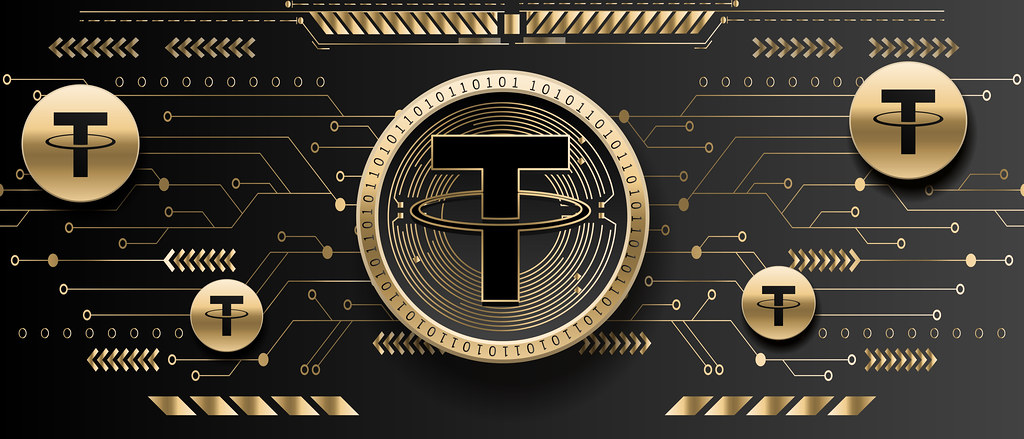Main Points:
- Tether, the world’s largest stablecoin issuer, is actively engaging with U.S. lawmakers on regulatory frameworks.
- The discussion centers on proposals like the STABLE Act, which would require stablecoin issuers to back tokens with highly liquid assets.
- Tether’s current reserve holdings, market dominance, and transparency practices are under close scrutiny.
- The potential regulatory changes could have significant ripple effects on the entire crypto ecosystem, influencing not only Tether but also other stablecoin issuers and the broader financial landscape.
- Recent developments indicate a growing emphasis on financial stability and enhanced oversight to maintain the U.S. dollar’s global influence.
1. The Intersection of Innovation and Regulation
In recent months, Tether has taken center stage in discussions surrounding the regulation of stablecoins in the United States. As the largest stablecoin issuer by market capitalization, Tether’s proactive engagement with U.S. lawmakers marks a significant step in shaping the future of digital assets. This article explores the details of these discussions, the implications for the crypto industry, and recent developments in the regulatory landscape that may influence future practices. Designed for readers searching for the next big crypto asset, revenue opportunities, and practical blockchain applications, this in-depth analysis offers insight into how Tether’s regulatory strategies could impact the market.
Stablecoins have emerged as a vital component of the digital asset ecosystem by offering a bridge between traditional finance and the innovative world of cryptocurrencies. They provide stability in a volatile market, backed by reserves that ideally ensure each token’s value is tethered to a stable asset, such as the U.S. dollar. However, the transparency and sufficiency of these reserves have frequently come under scrutiny, prompting discussions among regulators, financial experts, and market participants.
2. Tether’s Engagement with U.S. Policymakers
A. Background on Tether and Its Regulatory Involvement
Tether, issuing its flagship stablecoin USDT, has long been a subject of regulatory debate. The company’s CEO, Paolo Ardoino, has confirmed that Tether is engaging in discussions with U.S. policymakers regarding a robust regulatory framework for stablecoins. These discussions have recently centered around the STABLE Act, a legislative proposal that seeks to impose strict requirements on stablecoin issuers.
The STABLE Act, introduced on February 6, 2025, by members of the U.S. House of Representatives such as Bryan Steil and French Hill, is designed to ensure that stablecoin issuers maintain reserves comprising highly liquid assets like U.S. Treasury securities and insured deposits. Tether’s active participation in these discussions signals its willingness to cooperate with regulators, thereby potentially setting a precedent for industry-wide compliance.

B. The STABLE Act and Its Implications
The STABLE Act represents one of the most significant attempts by U.S. regulators to bring clarity and stability to the fast-evolving stablecoin market. Under this proposed framework, stablecoin issuers would be mandated to maintain a “1-to-1” reserve ratio, meaning that each issued token must be fully backed by a liquid asset that is readily convertible into cash. For Tether, which currently holds over $114 billion in short-term U.S. Treasury securities, compliance with such a mandate would require rigorous transparency and regular audits.
Industry analysts have noted that, if implemented, the Act could have far-reaching consequences. Monthly audits by U.S.-based accounting firms might become mandatory, replacing the current quarterly evaluations conducted by firms like BDO. JP Morgan analysts have speculated that this could force Tether to sell off portions of its less liquid assets, such as Bitcoin or precious metals, to meet the new requirements. The potential for such asset reallocation adds another layer of complexity to the regulatory challenge and could impact market dynamics significantly.
3. Tether’s Reserve Holdings and Market Influence
A. Overview of Tether’s Reserve Composition
Tether’s financial stability is largely dependent on its reserve holdings. According to recent disclosures, Tether’s reserves include over $114 billion in short-term U.S. Treasury securities, along with other assets that support the stablecoin’s value. This composition is a critical factor in maintaining market confidence in USDT, which currently commands more than 60% of the stablecoin market share, with a market capitalization exceeding $142 billion.
The emphasis on liquid assets like Treasury securities aligns with the regulatory focus on stability and transparency. These assets are seen as relatively secure and easily convertible into cash, making them ideal candidates for backing digital currencies. However, as regulatory scrutiny intensifies, Tether may be compelled to further enhance its transparency measures, potentially involving more frequent audits and stricter disclosure requirements.
B. The Impact on Market Confidence and Transparency
Transparency has long been a contentious issue for Tether. Critics have questioned whether Tether’s reserve assets are sufficient to support the vast number of USDT tokens in circulation. The company’s willingness to engage with policymakers and comply with potential new regulations could help restore confidence among investors and market participants. In turn, enhanced transparency might encourage other stablecoin issuers, such as USD Coin (USDC), to adopt similar practices, thereby fostering an environment of improved oversight across the industry.
Moreover, U.S. regulators, including officials from the Federal Reserve and the Commodity Futures Trading Commission (CFTC), have been closely monitoring the stablecoin market. Their concerns revolve around the potential risks associated with a large-scale failure or mismanagement of reserves, which could have broader implications for financial stability. Tether’s collaboration with lawmakers thus not only benefits its own operations but may also contribute to a more resilient and transparent financial ecosystem.
4. The Broader Regulatory Landscape
A. Global and Domestic Regulatory Trends
The regulatory environment for cryptocurrencies and stablecoins is evolving rapidly, both in the United States and around the world. In addition to the STABLE Act, U.S. regulatory bodies such as the Securities and Exchange Commission (SEC) and the CFTC have been actively exploring new measures to address risks associated with digital assets. For example, recent proposals from the SEC have emphasized the need for robust risk management practices and stricter disclosure requirements for crypto platforms.
On the international front, several countries are also developing frameworks to regulate stablecoins. The European Union, for instance, is working on its Markets in Crypto-Assets (MiCA) regulation, which aims to harmonize the treatment of crypto assets across member states. These global regulatory efforts underscore the growing recognition of stablecoins’ importance in the financial system and the need to safeguard both investors and the broader economy.
B. Recent Developments and Industry Responses
Recent news articles from reputable sources such as CoinDesk, The Block, and Bloomberg have highlighted the increasing momentum behind stablecoin regulation. These developments include not only legislative proposals like the STABLE Act but also heightened scrutiny of reserve management practices across the board. Market participants are closely watching these trends, as the regulatory landscape could redefine the competitive dynamics of the crypto industry.
Tether’s proactive engagement with U.S. lawmakers serves as a case study in balancing innovation with regulatory compliance. By offering to provide input on multiple proposed regulations, Tether is positioning itself as a leader in the industry—one that recognizes the importance of maintaining financial stability while continuing to drive innovation. This strategy not only bolsters Tether’s credibility but also sets a benchmark for how other companies in the crypto space might navigate the complex regulatory terrain.
5. Implications for Investors and the Crypto Market
A. Opportunities and Risks in the Evolving Market
For investors, the current regulatory discussions surrounding Tether and stablecoins represent both opportunities and risks. On one hand, a more regulated environment could provide a safer and more transparent market, reducing the potential for fraudulent practices and ensuring that reserve assets are genuinely sufficient. On the other hand, the imposition of stricter requirements might lead to short-term volatility, particularly if stablecoin issuers are forced to reallocate or liquidate certain assets to meet new standards.
Investors interested in diversifying their portfolios with digital assets must therefore remain vigilant. The anticipated regulatory changes could have a profound impact on the valuation of stablecoins and, by extension, the broader cryptocurrency market. As the industry moves toward a future marked by greater oversight, it is crucial for investors to assess not only the potential risks but also the long-term benefits of a more stable and transparent financial ecosystem.
B. Navigating the Transition: Strategies for Success
For those seeking the next revenue source or innovative crypto asset, understanding the implications of these regulatory shifts is paramount. Investors and market participants should consider the following strategies:
- Diversification: Maintain a diversified portfolio that balances exposure to regulated assets with innovative, high-growth opportunities in the crypto space.
- Due Diligence: Stay informed about the latest regulatory developments and conduct thorough research on the reserve practices of stablecoin issuers.
- Long-Term Vision: Consider the long-term benefits of a more transparent and stable market, which could drive sustainable growth in the crypto ecosystem.
- Active Engagement: Participate in industry discussions, forums, and policy consultations to better understand the evolving regulatory landscape and how it might affect future investments.
As regulators continue to refine the rules governing stablecoins, market participants who proactively adapt to these changes are likely to find themselves in a stronger position to capitalize on emerging opportunities.
6. Tether’s Future in a Regulated Market
A. Preparing for Regulatory Compliance
Tether’s proactive stance in engaging with U.S. lawmakers suggests that the company is preparing for a future where regulatory compliance is not optional but a fundamental aspect of business operations. By participating in discussions about the STABLE Act and similar proposals, Tether is not only safeguarding its own interests but also contributing to the broader effort to create a stable and transparent digital asset ecosystem.
Moving forward, Tether may need to enhance its audit processes, increase the frequency of reserve evaluations, and potentially restructure its asset portfolio to comply with new regulatory requirements. While these changes could introduce short-term operational challenges, they are likely to result in long-term benefits by bolstering market confidence and ensuring a more resilient financial infrastructure.
B. Setting Industry Standards
Tether’s engagement with regulatory authorities could set new standards for the entire stablecoin industry. As other issuers observe Tether’s approach, they may adopt similar practices to ensure compliance and enhance transparency. This collective move toward greater accountability could help mitigate systemic risks associated with digital assets and create a more robust framework for the future of blockchain-based finance.
Furthermore, by aligning its practices with regulatory expectations, Tether is contributing to a paradigm shift in the crypto industry—one that prioritizes both innovation and stability. This balance is essential for the sustained growth of the digital asset market and for maintaining the global influence of the U.S. dollar as a cornerstone of financial stability.
7. Charting a Path Forward
The ongoing dialogue between Tether and U.S. policymakers highlights the dynamic intersection of innovation, regulation, and market confidence in the realm of digital assets. As Tether navigates the evolving regulatory landscape, its proactive engagement sets a positive example for the industry. The potential implementation of measures such as monthly audits and strict reserve requirements, as proposed in the STABLE Act, could usher in a new era of transparency and stability for stablecoins.
For investors, innovators, and blockchain practitioners, understanding these developments is critical. The enhanced regulatory framework could not only safeguard the financial system but also create a more predictable environment in which to explore new revenue streams and investment opportunities. By closely monitoring these regulatory shifts and adapting strategies accordingly, market participants can position themselves to thrive in an increasingly regulated, yet innovation-driven, financial ecosystem.
Tether’s discussions with U.S. lawmakers over the regulation of stablecoins signal a significant move toward greater transparency and market stability. With proposals like the STABLE Act on the horizon, Tether’s potential need for monthly audits and stringent reserve ratios could reshape the operational landscape for all stablecoin issuers. This proactive engagement by Tether is likely to influence global regulatory trends and offers both opportunities and challenges for investors. As the crypto industry braces for these changes, a well-informed, strategic approach will be key to navigating the evolving market landscape.


